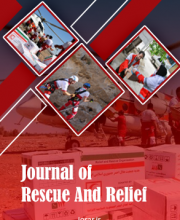Assessment of Traffic Accidents Referred to Hospitals and Forensic Medicine Department in Nikshahr, Iran, between 2014-2018(مقاله پژوهشی وزارت بهداشت)
INTRODUCTION: Iran, especially the Sistan-Baluchestan province, is one of the countries with the highest rates of accidents and traffic-related deaths. The present study aimed to evaluate traffic accidents referred to hospitals and the Forensic Medicine Department in Nikshahr in Sistan-Baluchestan province, Iran, during 2014-2018. METHODS: In this retrospective descriptive and analytical study, the statistical population included traffic accidents referred to hospitals and the Department of Forensic Medicine in Nikshahr. The data related to the variables of age, gender, location of the accident (inside or outside urban areas, rural roads), condition of the injured, severity of the injury, and the time of the accident were collected using a checklist. After determining the descriptive statistical indicators, the incidents were analyzed using chi-square and correlation tests. FINDINGS: During the study years in Nikshahr, a total of 3,669 people were involved in road accidents, out of whom 339 cases lost their lives. The highest rate of accidents (36%; n=1321) was in the age group of 19-29 years. Regarding education, 3, 260 (88.8%) crash victims were illiterate and without a university degree, while 409 (11.15%) cases had academic education. It was also detected that 1,879 (51.2%) accident victims were motorcycle riders with reported fractures, severe injuries, head injuries, and death. CONCLUSION: The results of the current pointed to the high rate of traffic-related deaths in Nikshahr, especially in summer. Therefore, prevention management is necessary to reduce traffic accidents and fatalities.
